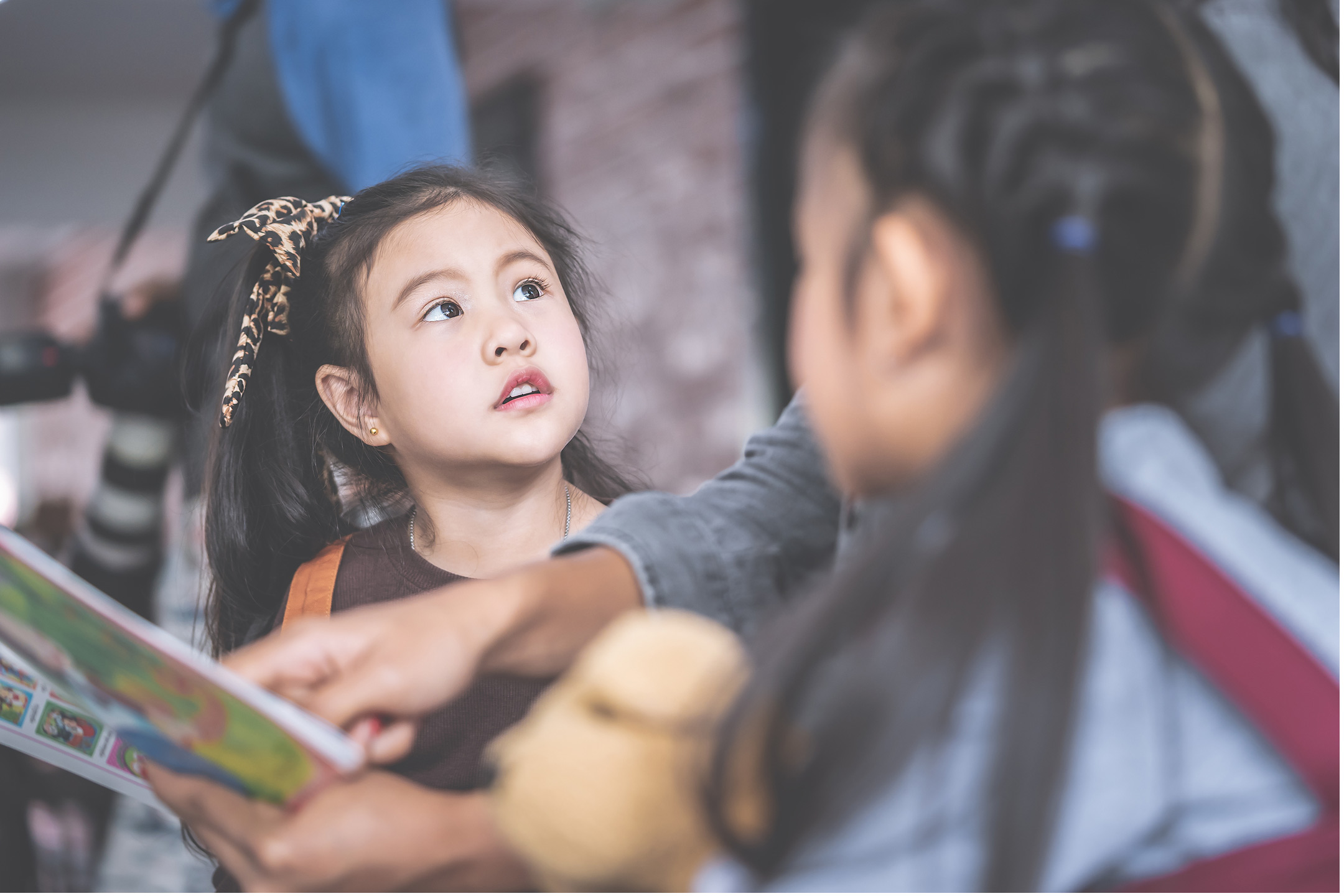
09 Jul Looking At Literacy: Read It Like You Mean It
Reading aloud to young children is akin to going on the stage. It requires a willingness to be theatrical, to sing, to change voices and be animated in your actions and facial expressions says Nan Williamson
It is true that the magic of reading lies in the words on the page, but bringing that magic alive for preschoolers is up to you, the reader.
Some people are naturally gregarious and animated in their speech and interactions. If you find that this does not come naturally, spend some time observing others reading to young children. This may happen in your local library, at school or simply when others in your family read to your children.
You will quickly understand that not all readers connect with children in the same way. Observe closely what is happening and how children react. Dare to make a fool of yourself. You may be surprised at the enthusiastic response of your listeners – and this response is great, confidence-boosting encouragement to increase your enthusiasm and excitement.
Do you remember being read to as a child? If you do, it is likely that the vividness of your memory corresponds with the vivacity and impact of the reader. I can well remember certain books that I fell in love with instantly through the power of the reader. I recall certain teachers and the books they read to me, while others have disappeared from my memory and I know that this is due to the style and power of the reader.
We were all enraptured, and I was hooked.
My defining moment came in the early 1950s when I was in Grade 4 in a small country town. With a teacher shortage and no relief teachers available, some of my classmates and I had been bundled into a neighbouring Grade 7 class when our teacher went home sick. During the afternoon, the Year 7 teacher, a striking red-head, picked up Anne of Green Gables and started reading. She was an animated and passionate reader and she brought the Avonlea school scene to life as if by magic. We were all enraptured, and I was hooked.
When the lesson was finished, I panicked. What happened next? How would I know? I went home and begged for the book. As it happened, my mother had been a lover of author L M Montgomery and the Anne books herself in her youth. She wondered whether I was too young to read the book at nine, but I was not to be dissuaded. It took some weeks to get hold of my own copy of the book, and when I did, it was an ugly book with coarse paper and plain cover. I was momentarily disappointed, but not for long. The magic lay in the words and I was soon transported into that Nova Scotian turn-of-the-century world. I went on to read the remainder of the books in the series, all of which I loved, but none as much as the first. I have since re-read the series with similar enjoyment and a sense of recaptured childhood.
…she gave me a priceless gift; the joy of reading and being read to.
It is my first memory of really loving reading. As a teacher and parent today I look back at the circumstances and marvel at that teacher’s ability to captivate a young audience by the power and magic of her reading. There is no question that she loved the book herself and loved reading, for this came through in every word she read. In the space of an afternoon, supervising a class of more than 50 young students, she gave me a priceless gift; the joy of reading and being read to.
Reading with your child should be a magical, interactive time
Reading aloud with expression and enjoyment is captivating. It does not work if we rush through the words, treat reading as a chore or show little empathy with the story and the characters. Listeners know. Even little children. By truly ‘getting into the story’, showing expression through our voices, eyes, hands and bodies, and through enjoying it ourselves, we are able to convey the excitement and build bridges for young children to enter the worlds of books.
Reading with your child should be a magical, interactive time, where both the reader and listener are close, able to enjoy the print and pictures and to engage in discussion, laughter and reflection. Your own enjoyment and animated ‘performance’ can bring the story to life and lead your child into the magical world of reading.
Nan Williamson is a literacy consultant and was a primary teacher for more than 20 years, with special interests in children’s literacy.

